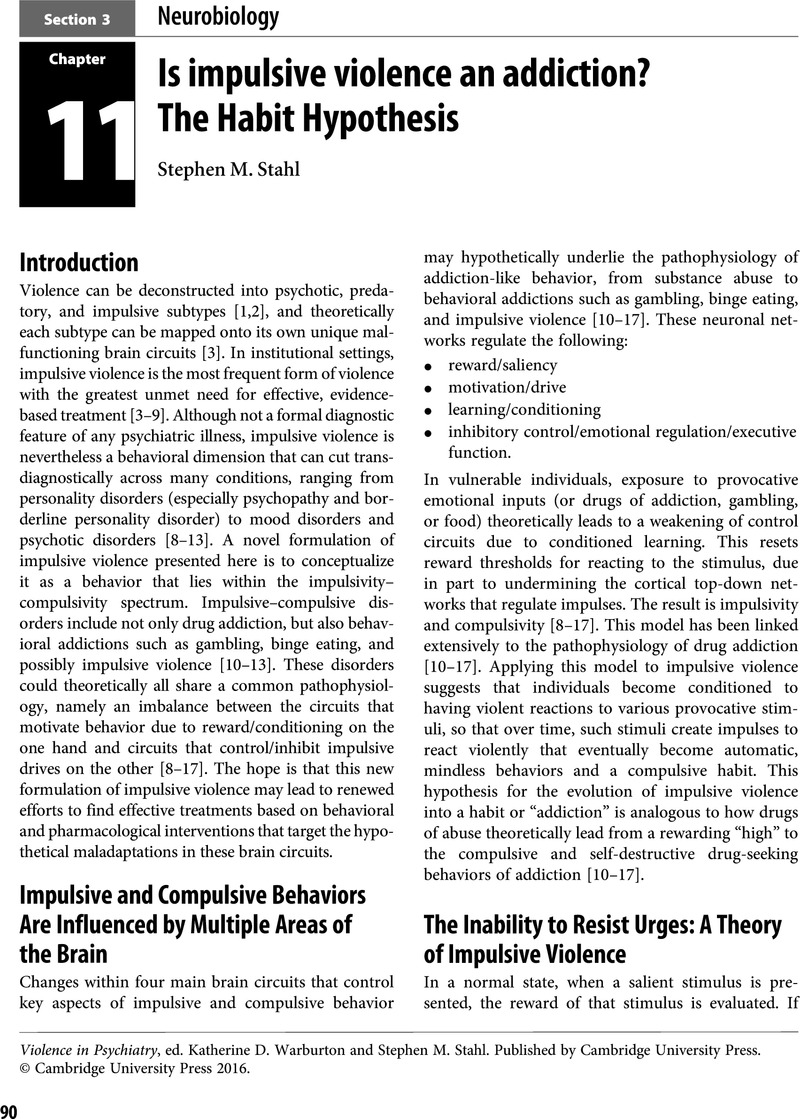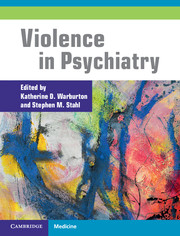Book contents
- Violence in Psychiatry
- Violence in Psychiatry
- Copyright page
- Contents
- Contributors
- Section 1 Statement of the problem
- Section 2 Assessment
- Section 3 Neurobiology
- Chapter 9 Deconstructing violence as a medical syndrome: mapping psychotic, impulsive, and predatory subtypes to malfunctioning brain circuits
- Chapter 10 Aggression, DRD1 polymorphism, and lesion location in penetrating traumatic brain injury
- Chapter 11 Is impulsive violence an addiction? The Habit Hypothesis
- Chapter 12 The neurobiology of psychopathy: recent developments and new directions in research and treatment
- Chapter 13 The neurobiology of violence
- Chapter 14 Impulsivity and aggression in schizophrenia: a neural circuitry perspective with implications for treatment
- Chapter 15 Serotonin and impulsive aggression
- Section 4 Guidelines
- Section 5 Psychopharmacology
- Section 6 Treatment interventions
- Index
- References
Chapter 11 - Is impulsive violence an addiction? The Habit Hypothesis
from Section 3 - Neurobiology
Published online by Cambridge University Press: 19 October 2021
- Violence in Psychiatry
- Violence in Psychiatry
- Copyright page
- Contents
- Contributors
- Section 1 Statement of the problem
- Section 2 Assessment
- Section 3 Neurobiology
- Chapter 9 Deconstructing violence as a medical syndrome: mapping psychotic, impulsive, and predatory subtypes to malfunctioning brain circuits
- Chapter 10 Aggression, DRD1 polymorphism, and lesion location in penetrating traumatic brain injury
- Chapter 11 Is impulsive violence an addiction? The Habit Hypothesis
- Chapter 12 The neurobiology of psychopathy: recent developments and new directions in research and treatment
- Chapter 13 The neurobiology of violence
- Chapter 14 Impulsivity and aggression in schizophrenia: a neural circuitry perspective with implications for treatment
- Chapter 15 Serotonin and impulsive aggression
- Section 4 Guidelines
- Section 5 Psychopharmacology
- Section 6 Treatment interventions
- Index
- References
Summary

- Type
- Chapter
- Information
- Violence in Psychiatry , pp. 90 - 95Publisher: Cambridge University PressPrint publication year: 2016



